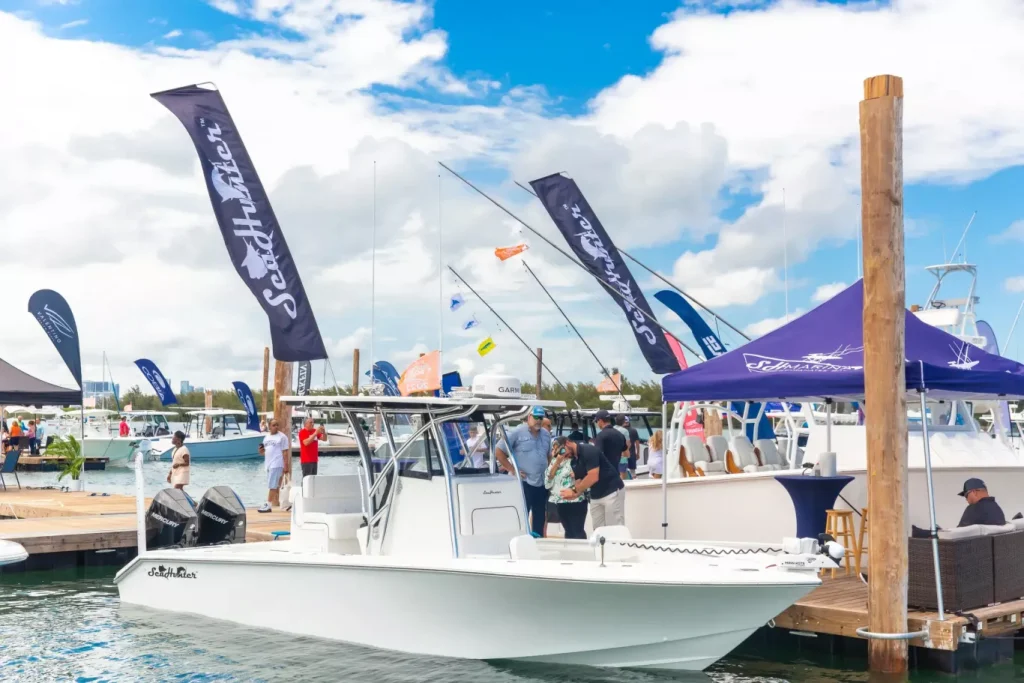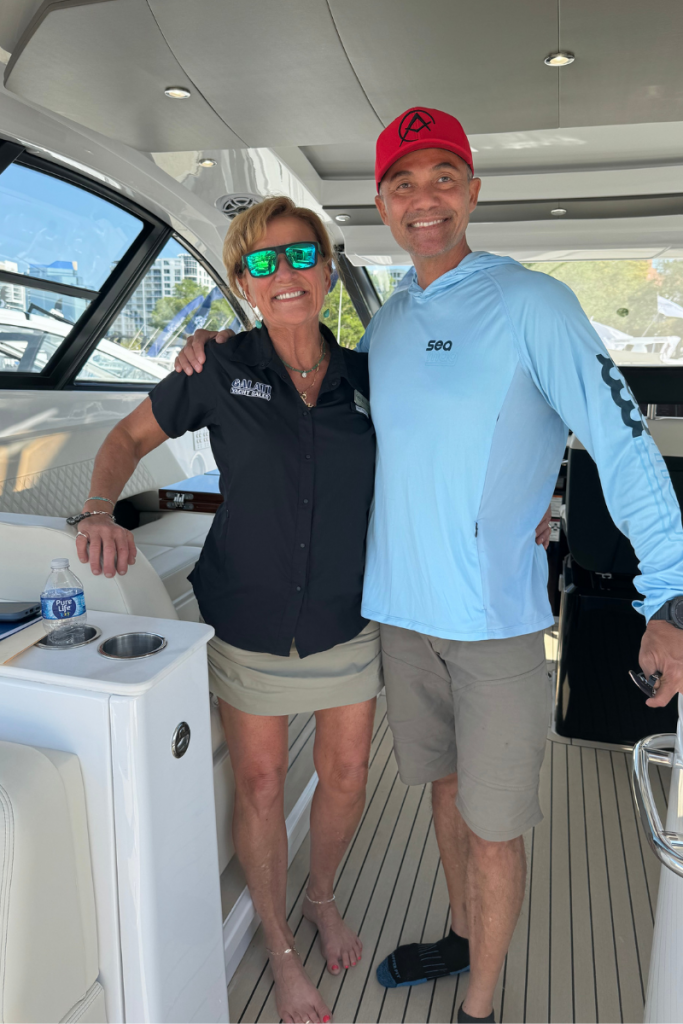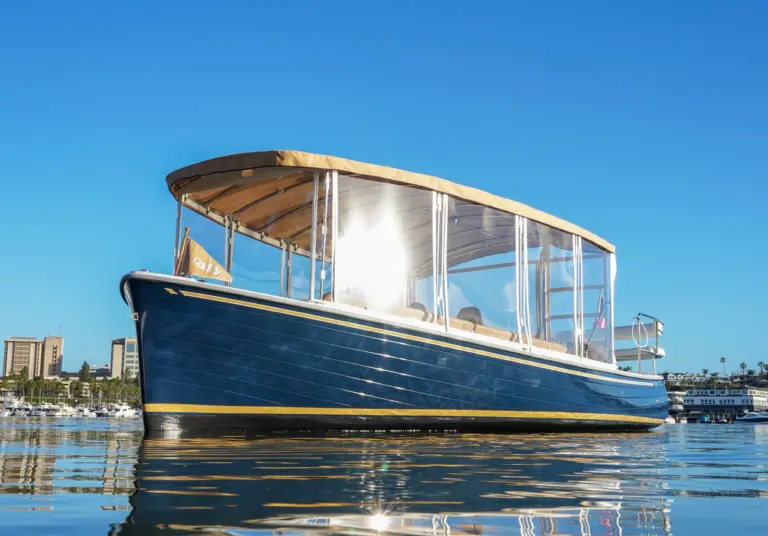Nada Boat Values: A Comprehensive Guide for Smart Purchasing Decisions
NADA boat values play an essential role in helping potential buyers and sellers understand the market value of various types of boats.
From personal watercraft to sailboats and powerboats, the NADA guide helps provide accurate and comprehensive values based on market trends, specifications, and other factors.

By understanding how these values are determined, both parties can ensure a fair transaction in the boating market.
Moreover, the NADA guide doesn't just provide pricing information for boats; it also covers personal watercraft, outboard motors, and trailers.
The guide can assist in evaluating the condition and value of a boat for sale, offering valuable insights to potential buyers.
Thus, using NADA boat values as a pricing tool can help streamline and improve the boat buying and selling process.

Key Takeaways
- NADA boat values provide a comprehensive understanding of market values for various boat types.
- Accurate and up-to-date pricing information helps ensure fair transactions in the boating market.
- The NADA guide covers various aspects of the marine industry, beyond just boat pricing.
Understanding Boat Values
Boat values can be a complex topic for those looking to buy or sell a watercraft. The NADA Guides provide a reliable source of boat pricing information, offering a fair price range based on various factors such as age, condition, and features of the boat.
It is vital for both buyers and sellers to have a solid understanding of boat values in order to make well-informed decisions.
NADA Guides for Boat Pricing are a comprehensive tool to determine the value of boats, including personal watercraft, sailboats, outboard motors, and trailers.
By taking into account the make, model, year, and various specifications of the watercraft, the guides provide suggested price ranges that can be used as a starting point for negotiations.
Used boat values, in particular, are an important component of the NADA Guides, enabling buyers and sellers to gauge the market value of pre-owned boats.
In order to assess the fair price of a boat, it is essential to consider multiple factors that can affect its value. Some of these factors include:
- Age of the boat
- Overall condition
- Additional features and upgrades
- Geographic location (supply and demand)
With this information at hand, both the buyer and the seller can make better-informed decisions about the boat's price.
However, it is important not to rely solely on NADA Guides for boat values. A thorough research on comparable boats in the market and additional resources such as marine surveys can help to obtain a more accurate understanding of a boat's worth.
Types of Boats and Their Values
Personal Watercraft
Personal watercraft, such as jet skis and wave runners, are smaller and more affordable compared to other types of boats. Their values depend on factors like brand, model, age, and condition.
For example, a well-maintained used jet ski can be worth anywhere from $5,000 to $15,000, with newer models fetching higher prices. The NADA Boat Value Guide is a helpful tool to determine their current market value.
Powerboats
Powerboats, also known as motorboats, come in a wide variety of styles and sizes. Some popular types of powerboats include bowriders, cruisers, and ski boats.
Values for powerboats can range from $10,000 for a small, used bowrider to over $100,000 for a larger, new cruiser.
As with all boats, their values depend on factors such as brand, engine type, and optional features. The Boat Prices and Boat Values page on boats.com provides valuable information about pricing trends for powerboats.
Sailboats
Sailboats, characterized by their reliance on wind power, come in various shapes and sizes, ranging from small dinghies to large ocean cruisers.
Sailboat values fluctuate based on factors like boat size, age, and condition. Smaller, used sailboats may be priced around $5,000, while larger, newer models can easily exceed $100,000. The NADA Guides - Boat Prices helps users pinpoint the market value of sailboats taking into account these factors.
Yachts
Yachts are luxury vessels that are typically larger and more expensive than other types of boats. Yacht values can vary significantly depending on make, model, and customization options.
Smaller yachts may start around $200,000, while larger or more luxurious models can cost several million dollars. The Boat Valuation with Price Checker is a useful resource for buyers and sellers to determine the value of yachts.
Fishing Boats
Fishing boats are designed specifically for angling enthusiasts and can be categorized into freshwater and saltwater types.
The values of fishing boats also vary widely based on their size, features, and intended use. Bass boats, for example, may range from $10,000 to $80,000, whereas larger offshore fishing boats can cost anywhere from $50,000 to over $500,000. The NADA Guides provide pricing information and personal watercraft values for various types of fishing boats.
Key Factors Influencing Boat Pricing
Boat Condition
One of the critical factors affecting the value of a used boat is its condition.
A well-maintained boat, both aesthetically and mechanically, can command a higher price than a neglected one.
Buyers should look for signs of wear and tear such as damaged hulls, rusted fittings, or faulty electronics.
On the other hand, regular maintenance, including servicing outboard motors and navigation equipment, can significantly influence a boat's value positively.
Location and Market Demand
Location and market demand play a substantial role in determining a boat's price.
Some areas have a higher demand for specific boat models, which might push prices higher.
Additionally, boats located near coastal regions or popular boating destinations are often more valuable than boats situated in remote areas. The costs associated with transporting a boat from one location to another can also factor into the pricing.
Age and Depreciation
Like most assets, boats depreciate in value over time.
The age and depreciation of the vessel significantly impact its current market value.
Newer models usually come with updated technology, designs, and enhanced features, making them more valuable than older ones. However, classic or vintage boats can still hold their value well if properly maintained over the years.
Boat Size and Class
The size and class of a boat are other crucial factors that affect its pricing.
Smaller boats tend to have lower prices in comparison to larger, more luxurious vessels.
In general, the larger the boat, the higher the price. Additionally, boats within the same size category may vary in price due to differing types or classes, such as sportboats, cruisers, or sailboats.
| Boat Type | Approx. Size Range | Price Range |
|---|---|---|
| Dinghies | 6-15 feet | Low |
| Bowriders | 16-28 feet | Moderate |
| Cruisers | 25-65 feet | Moderate to High |
| Sailboats | 15-100+ feet | Moderate to Very High |
Additional Equipment and Accessories
A boat's value can be further influenced by the additional equipment and accessories included in the sale.
Extras such as trailers, high-quality navigation systems, and fully equipped galleys can increase the total price of the package.
On the other hand, boats missing essential components may experience a decrease in value.
NADA Guides and Other Pricing Tools
Using NADA Guides for Boat Values
NADA Guides is a comprehensive platform that helps determine the market value of various types of vehicles, such as boats and personal watercraft.
They provide detailed boat pricing information, including blue-book type specifications and data for a wide range of watercraft, from fishing boats to yachts and personal watercraft.
Comparison with Kelley Blue Book and ABOS Marine Blue Book
In addition to NADA Guides, other boat pricing tools include Kelley Blue Book and ABOS Marine Blue Book.
While Kelley Blue Book focuses primarily on cars and motorcycles, they occasionally offer boat values, but might not provide extensive information specifically tailored to watercraft as NADA Guides do.
ABOS Marine Blue Book, on the other hand, is a specialized guide that offers a wide range of boat pricing information, including data on outboard motors and boat trailers.
However, it may not be as readily accessible or user-friendly as NADA Guides.
Real-Time Pricing Tools
For those seeking more current data on boat pricing, real-time pricing tools like Boat Price Checker offer an alternative to NADA Guides.
This tool uses real-time data collected from active boat listings in the marketplace, giving users access to up-to-date pricing information.
Summary:
- NADA Guides: A comprehensive platform that offers detailed pricing information for a wide range of watercraft.
- Kelley Blue Book: Primarily focused on cars and motorcycles, but occasionally provides boat values.
- ABOS Marine Blue Book: Specialized guide with extensive boat pricing information, but may not be as accessible and user-friendly as NADA Guides.
- Boat Price Checker: A real-time pricing tool that displays current boat listing prices in the marketplace.
Buying and Selling Insights
For Sellers
When selling your boat, it is crucial to accurately determine its value to attract potential boat buyers.
One method to estimate value is using the NADA Guides or Boat Trader's Price Checker.
These tools incorporate factors such as the boat's make, model year, features, and condition, helping you set a competitive price.
Before advertising your boat, ensure it is in top condition to increase its appeal.
Cleaning, performing necessary repairs, and updating equipment are essential steps in making your boat stand out among others.
It is also beneficial to gather all the relevant documents, such as maintenance records and ownership papers, which will inform the sales transactions.
When it's time to sell, consider different platforms like Boat Trader and YachtWorld for advertising your boat to reach a larger audience.
Working with professional boat dealers can offer additional support and insights throughout the process.
For Buyers
If you are planning to buy a boat, doing thorough research is essential.
Start by determining the type and size of the boat that best suits your needs.
Then, utilize resources such as the NADA Guides or Boat Trader's Price Checker to get familiar with the market value of the boat model you are interested in.
Keep in mind that boat values can vary depending on factors like location, condition, and additional features.
Therefore, it is crucial to inspect the boats in person whenever possible and even consider hiring a marine surveyor for a thorough assessment.
When negotiating with the seller, inquire about the boat's history, including its maintenance records and any repairs or upgrades.
Establishing sales transactions terms and conditions in writing, preferably with the help of a maritime lawyer, will ensure a smooth and transparent buying process.
For buyers who own a current boat, it may be possible to negotiate a trade-in or cash offer for it with the boat dealer.
This could reduce the financial burden of purchasing a new boat and streamline the overall process.
Value-Added Services
Trade-In Values and Offers
When looking to upgrade or trade in your current boat, understanding the NADA boat values can be essential to make the best decision.
By evaluating trade-in values, sellers can confidently negotiate the price, while buyers can determine if the offer matches the current market value.
Factors such as age, model, and condition play a significant role in estimating a boat's trade-in value.
Boat Insurance Considerations
Boat insurance is another crucial aspect to consider while owning or purchasing a watercraft.
By familiarizing yourself with NADA boat values, you can estimate the appropriate insured value for your boat.
Insurance companies consider various factors such as boat size, usage, and location when determining premiums.
It's advisable to research and compare boat insurance options to ensure comprehensive coverage at the best price.
Boat Loans and Financing
Acquiring a boat loan or financing can be a vital step in the purchasing process.
Lenders usually offer loans based on a boat's market value.
Thus, understanding the NADA boat values becomes essential for both borrowers and lenders.
These values can also help set a suitable down payment and assess affordability when considering different loan options.
A borrower's credit history, debt-to-income ratio, and the loan term further impact the interest rates and approval chances.
Evaluating Boats for Sale
When you're in the market for a boat, it's important to know how to evaluate boats for sale to make sure you're getting a fair price.
There are a few key factors to consider when determining the value of a boat, which include its make, model, year, and condition.
This section will explore two methods of evaluating boats: boat price checker tools and professional boat appraisals.
Boat Price Checker Tools
Boat price checker tools, such as NADA Guides and Boat Trader's Price Checker, are useful resources for getting instant, approximate valuations of boats based on real-time market data.
These online tools allow you to compare the prices of similar boats on the market, helping you understand typical pricing for the specific boat you're interested in.
They also factor in the boat's age, make, model, and overall condition to provide a more accurate estimate.
For vintage or rare boats, it may be beneficial to explore additional resources such as historical data provided by Boat Trader, which can shed some light on the collectible or antique value of a particular vessel.
Professional Boat Appraisal
Boat price checker tools are a great starting point for assessing a boat's value, but they may not always provide the most accurate estimate.
When dealing with large investments or a boat with unusual features, it's essential to seek a professional boat appraisal conducted by a qualified marine surveyor.
A boat surveyor is an expert who specializes in evaluating watercraft by thoroughly inspecting the boat's structure, systems, and overall condition.
Their in-depth evaluation can identify potential problems or maintenance issues that might affect the value of a boat.
Moreover, a formal appraisal can help ensure you have appropriate financing and insurance coverage in place.
Market Trends and Analysis
The boating industry has observed significant changes in recent years.
One of the major factors contributing to these changes is the acquisition of NADA Guides by J.D. Power in 2015.
This integration led to the expansion of their suite of valuation tools, providing comprehensive data on various types of watercraft, pricing information, and personal watercraft values.
Many boat manufacturers are experiencing high demand and fluctuating market trends.
A recent boating market report indicates that consumer demand, coupled with lower than normal inventory levels, has driven historic spikes in boat values.
The global average boat price has increased by 28.9% since 2019, reaching $182,900.
When considering the valuation of used boats, it’s essential to take into account the current market dynamics.
Traditional methods, such as ABOS Marine and NADA, have their limitations.
However, tools like Boat Trader's Price Checker offer a significant advantage by providing real-time pricing information based on active marketplace sales transactions.
Boat Wizard, another popular tool in the industry, assists with tracking sales trends, pricing used boats, and evaluating manufacturers' performance.
While industry analysts rely on it for accurate information, it's essential to consider that market trends can vary across different regions and types of watercraft.
Frequently Asked Questions
How can I find the value of a used boat?
To find the value of a used boat, you can refer to valuation guides such as the NADA Boat Value Guide and boats.com. These guides consider factors like make, model, year, length, and engine size to estimate the fair market value.
What are ways to determine a boat's fair market value?
Apart from using valuation guides like NADA, you can also assess a boat's fair market value by checking recent sales or listings of similar boats in your region.
Online classifieds, brokers, and auction houses are also helpful resources. Keep in mind that factors like condition, unique features, and market conditions may affect the final estimation.
Can I look up boat values based on the VIN number?
Boat values are not determined based on their Vehicle Identification Number (VIN), but rather their Hull Identification Number (HIN).
While it may not give you an exact value, the HIN can help in identifying the make, model, and year of the boat, which will be useful when using valuation tools like NADA to estimate its value.
Are there free tools available for estimating boat values?
Yes, there are free tools available for estimating boat values, such as the NADA Boat Value Guide.
Additionally, websites like boatsgeek.com and nadabookinfo.com offer resources on determining used boat prices.
What is the equivalent of the Blue Book for boats?
The NADA Boat Value Guide is the equivalent of the Blue Book for boats. It provides used boat values for personal watercraft, sailboats, outboard motors, and trailers, and takes into account factors like make, model, year, and condition.
How are boat values with motors assessed differently?
Boat values with motors are assessed differently depending on whether the motor is inboard or outboard.
Inboard motors typically add more value to the boat, as they are often more powerful and integrated with the boat's design.
Outboard motors have varying impacts on value, based on factors such as horsepower, age, brand, and condition.
Valuation guides like NADA consider these factors when estimating boat values.
Charlie is Editor-in-Chief of Sea Magazine







